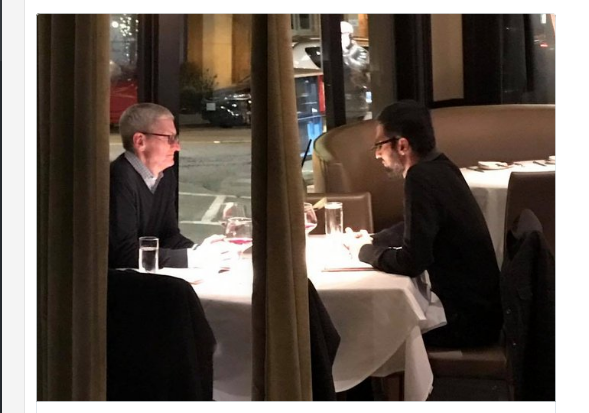Yesterday, Zynga acquired a one-person app for a whopping $42mn. 42 million dollars. Let that sink in.
While not everyone can get as lucky, it proves that there is money to be made with a good app. Ask the creators of Instagram, Snapchat or Pokemon.
The average number of apps used by the typical US smartphone owner is around 33. Barring the staple apps like Facebook, Whatsapp, Instagram, Snapchat, Uber and others, there’s always scope for good apps even today.
So, here’s a 5 step cheatsheet on how you can turn that app idea into reality and be on your way to creating history and/or millions of dollars.

1. Think of an idea. Duh!
Obviously a great app begins at a great idea. While Travis Kalanick wanted to arrange luxury rides at the touch of a screen, creators of Instagram just wanted people to cater to their vanity or aesthetical chops by posting photos online. It’s about getting the pulse of the market you want to operate in and identifying gaps, and coming up with a solution.
2. Play devil’s advocate
Before investing further time and money into getting an app analyse whether your idea really needs an app or can be solved with a simple website. A general rule of thumb is that anything that needs a constant/ almost every day use is a good use case for an app. Ability to use the product on the go also is great use case for an app. An Uber can’t do with a website. While a niche text blog can. If the product integrates a camera, it automatically becomes a great app idea. Case in point – > Pokemon, Dubsmash or even the Prism. If the idea behind your app is to make money, which most likely it is, it needs to be monetizable. So whether the money will come from the app itself being paid, native ads, or working as as an ad serving platform itself like Instagram and Pinterest.
3. Flesh the app out on paper. Create a mockup.
Before you take that first step into coding your app or hiring a developer to do it, visualise the app and create a mock up. Flesh out the home page, the user flow, the screen icons and buttons, and the ratio of text and graphics. A lot of times you may realise that the app idea is not as feasible afterall after getting a look at how user friendly it may be at the time of conception. Plus, having a mockup will make it easier for the coders to understand where you’re coming from.
4. Do focus interviews to sound out the app idea

Most of us tend to think that our ideas are the best thing since the sliced bread. (Of course they are.) But it pays to do a sanity check. Get a bunch of friends together and run your idea through them. Ask them if they would use the app. If your friends are all “You go girl!”, you can even hire a bunch of freelancers for a paid focus interview and sound out your idea. Not only will this little exercise serve as a outside introspective into your idea, but it might also might lead to a lot of features, addons and improvements you may not have thought of yourself at the time of conception.
5. Get into development

So your app idea has passed the acid test of you second guessing it and the critical eyes of the third party. Time to start working to materialise it. Chances are you can think of a great idea and but you’re not a great coder or not a coder at all. Luckily, the gaps between great creators and people who actually do the creating has been bridged. Great app developers are a Google search and reviews away. There’s a number of great mobile app development companies in San Francisco. Have a chat with one, let them understand your needs, and work out the costs. Keep in mind that creating a professional-quality app will need a big initial investment. Be prepared to cough up this cost and if all goes well, it’ll more than pay for itself. (Snapchat just launched an IPO.)
6. Beta testing the app
The first version of your app is here and you can’t wait to get it out to the market. But wait, resist the temptation to launch the app straightway. Use the beta version of your app yourself for a few days to identify bugs and straighten out kinks. Maybe the bright pink opening screen wasn’t a great idea afterall. Did you forget the ‘sort by price’ feature? Using an SDK file, get your friends (Hi again!) and outsiders test it too.
7. Launching the app and promoting it organically
Finally your app will be on the playstore or apple store depending on what OS you chose for it to be. It’s a good idea to promote the app within your own circles first to generate some initial traction and get reviews coming.
8. Promoting the app with paid channels
A good app will just sit unnoticed amongst the millions of app on the Playstore. And unless it’s a viral app like the Dubsmash or Pokemon, to get users to install and use it, you will need to take help from the paid channels. Fortunately app marketing is a legit thing now and there’s various platforms on which to market your app. For starters, you can use Facebook’s app install campaigns which let you select your specific goal from the campaign, target audience and manage budgets. Refer to the “mobile app install ads best practices” before starting on any paid campaigns.
9. Hire a sales team to get that money coming
Getting users on an app is only the beginning. Now that you have a sizeable number of users, how do you monetise the thing? Again if your product itself is a paid service or a subscription based model, revenues are auto-pilot. But if you’re a free app like Snapchat, how do you make money? This is where your own sales chops or a sales team comes in. Depending on the type and niche of your app, you can always gun down prospective advertisers who can be willing to partner with you. You give them the visibility, they give you the money. To automate this you can even turn your app into an ad serving platform which will let ad exchanges and advertisers to place ads on the app directly.